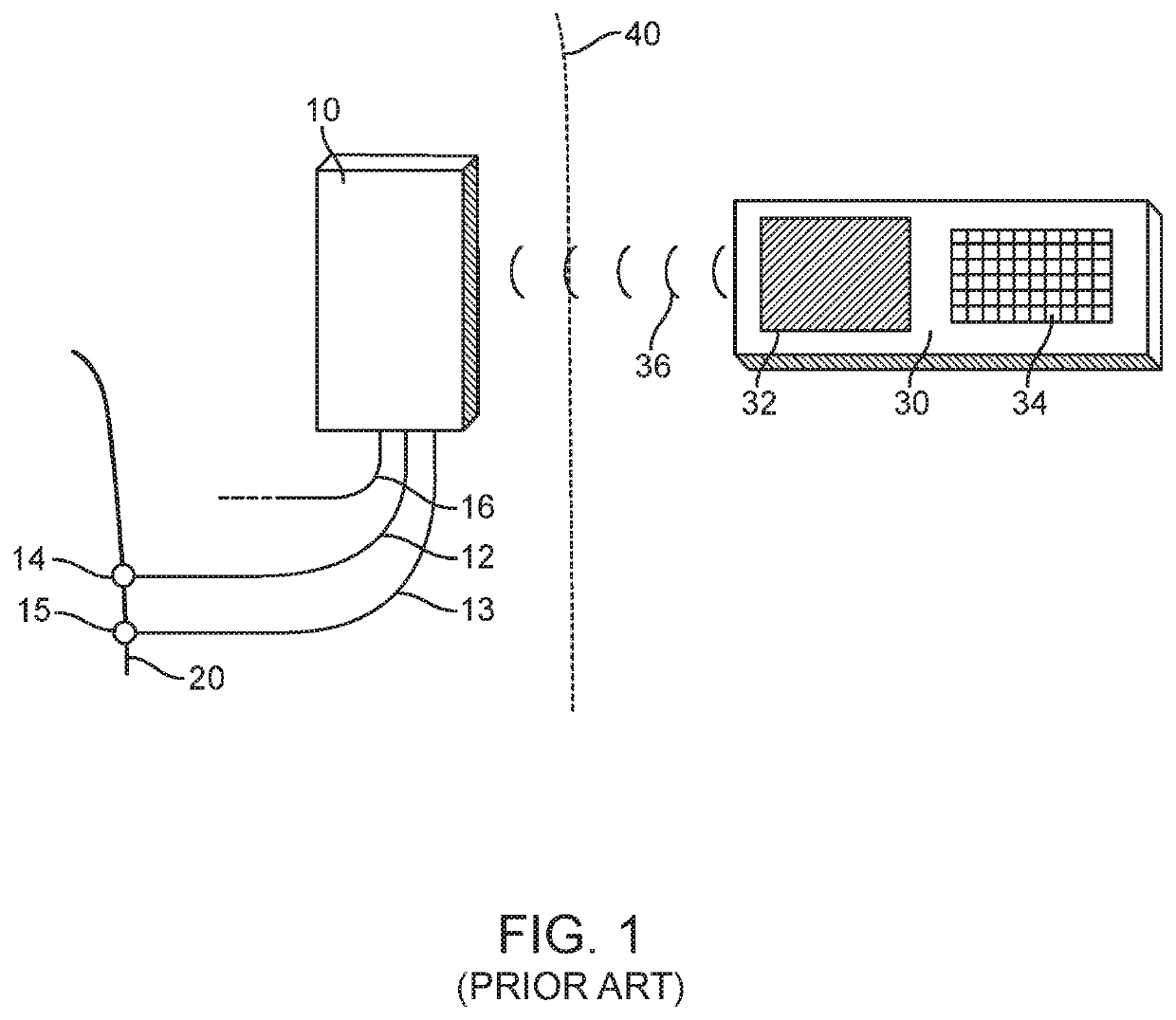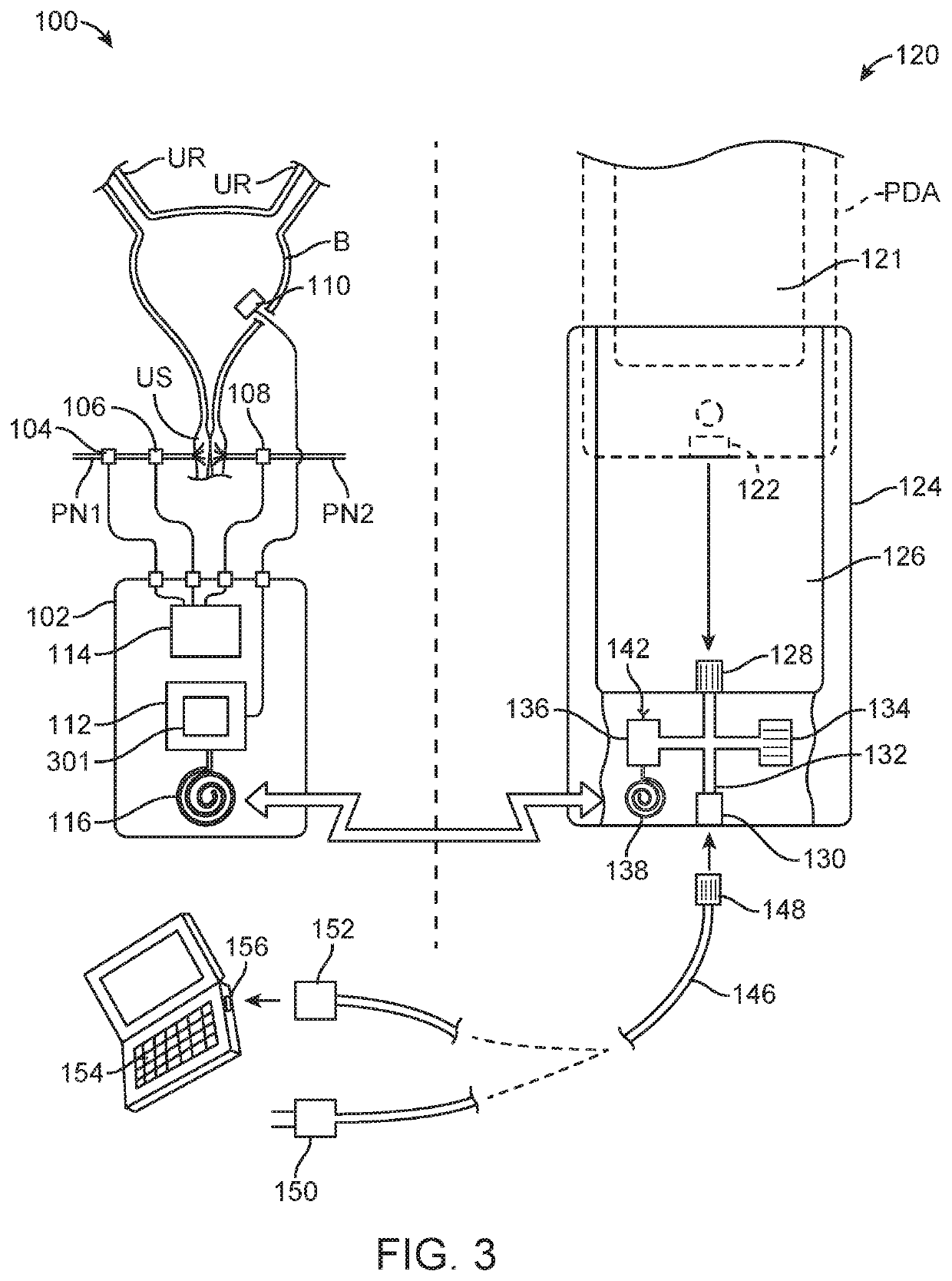Systems and methods for patient-enabled bladder control
a technology of patient-enabled bladder and system, applied in the field of medical equipment and methods, can solve the problems that the bluetooth or other antenna on the accessory device will not be sufficient to communicate with the implanted devi
- Summary
- Abstract
- Description
- Claims
- Application Information
AI Technical Summary
Benefits of technology
Problems solved by technology
Method used
Image
Examples
Embodiment Construction
[0032]Embodiments of the invention provide devices, systems and methods for delivering stimulating signals to paralyzed and other patients incapable of voluntary control of urinary function. Many embodiments provide the stimulating signals to these patients in the form of electrical currents so as to so as to initiate and / or control their urinary function. In particular embodiments, systems of the present invention provide both an external device and an implanted device which are capable of working in combination to allow a patient to selectively control urinary function by stimulating the pudendal nerve to initiate urination and optionally to terminate urination. Also in particular embodiments, the present invention provides real time information relating to the patient's bladder fullness, usually by measuring and indicating pressure but optionally, by measuring and indicating bladder distension or stretching of the bladder wall.
[0033]The system components for initiating and option...
PUM
 Login to View More
Login to View More Abstract
Description
Claims
Application Information
 Login to View More
Login to View More - R&D
- Intellectual Property
- Life Sciences
- Materials
- Tech Scout
- Unparalleled Data Quality
- Higher Quality Content
- 60% Fewer Hallucinations
Browse by: Latest US Patents, China's latest patents, Technical Efficacy Thesaurus, Application Domain, Technology Topic, Popular Technical Reports.
© 2025 PatSnap. All rights reserved.Legal|Privacy policy|Modern Slavery Act Transparency Statement|Sitemap|About US| Contact US: help@patsnap.com



